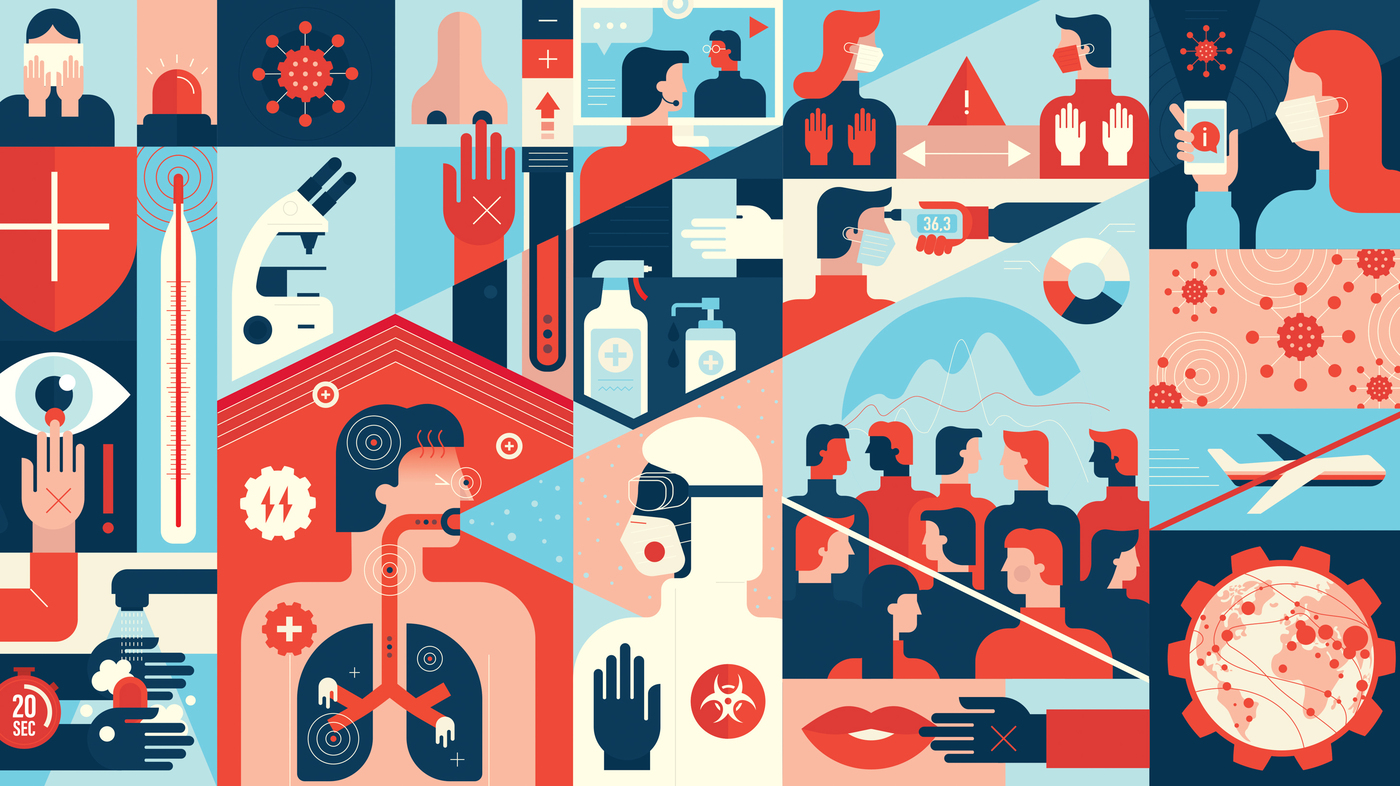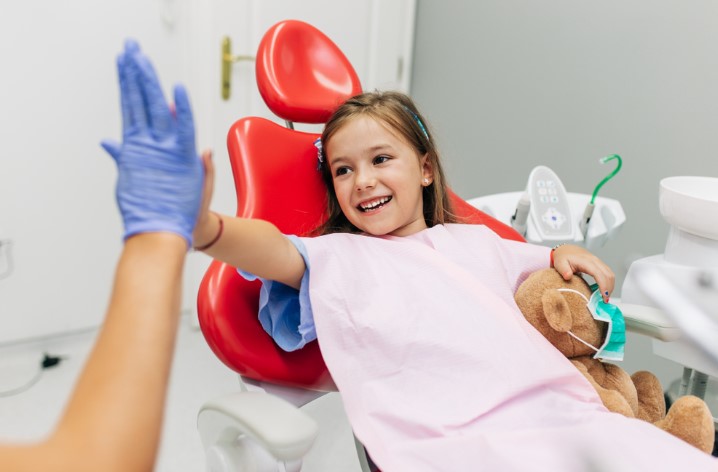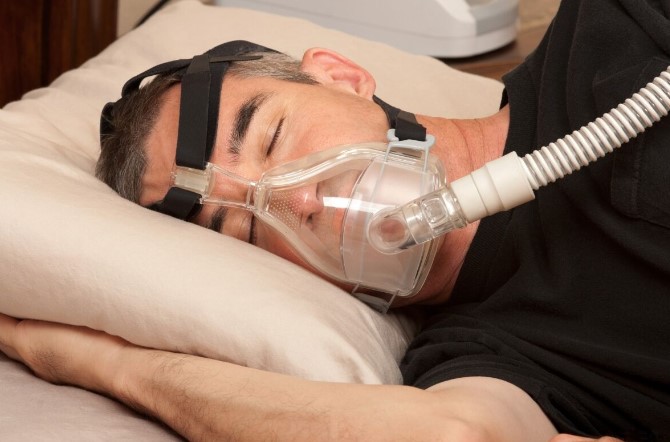What to do if you test positive for COVID : Shots



Omicron is so ridiculously contagious that even if you follow recommended precautions, you still might get it. And if your job requires you to interact with people or if you have kids in your household, forget it; it can feel more like a “when” rather than an “if.”
So while it’s still important to try to keep COVID out of your household — since you never know when someone could end up seriously ill — here’s what to do if you or someone you live with does get it.
We talked to four experts who lay out the steps you need to take to care for your physical and mental health, and how to keep your community safe, from the moment you or a member of your household has been exposed to when you can spring back into regular life post recovery.
Because, yes, this can be a scary, stressful and logistically confusing time. So take a deep breath. You’ve got this. Here we go.
Step 1: Confirm if you really have it
If you are showing signs of a virus (fever, headache, congestion, sore throat, gastrointestinal issues) what you do next can really depend on your access to testing, says Dr. Cassandra Pierre, medical director of public health programs at Boston Medical Center and a parent of 4-year-old twins who just had COVID.
If you have a decent supply of at-home antigen tests, says Pierre, go ahead and take one as soon as you feel ill. “But do not,” she stresses, “use that test as proof-positive that you can go out and interact in society, thinking it’s just a cold.” Many people are using an early negative test as a false sense of assurance, she says.
“With the omicron variant,” says Pierre, “we’re seeing a lot of antigen tests come back negative within the first two days of symptoms and then after a few days, come back positive.” So if you have access to a number of at-home tests, it’s worth taking that early one because some people will test positive in those first couple days and then they will know they need to isolate (here’s a refresher on the difference between isolation and quarantine).
For those that are symptomatic and test negative the first time, go ahead and take a second test on day three or four, says Pierre. That’s when most of the positive test results are coming in with this variant.
And if you don’t have access to multiple at-home tests? Isolate immediately and save your test for the third or fourth day, she says. If you don’t have access to home tests or they aren’t in your budget, check out free community testing sites in your area.
And if you test positive on a rapid test, says Pierre. “It’s not necessary to go out and get a PCR test. Rapid tests have really good sensitivity – especially if you are symptomatic.”
The only time you may want or need to get a follow-up PCR test – which is more sensitive to the virus – is if you get a negative test in those first couple days and need to know immediately if you have COVID for your job or other reasons.
Step 2: Let people know and cancel plans
One of the first (and the best) things you can do for your community is inform all the appropriate people that you have COVID, says Pierre – including everyone you’ve interacted with. Even though you and your household may just have mild symptoms, people that you have may have passed it on to need to know, says Pierre. This is especially true for people who are not vaccinated or with underlying health conditions that puts them at risk of severe illness, she adds.
Who exactly needs to know? You should tell friends you’ve seen, your employer, your kid’s friends and school administration, says Dr. Michael Smith, MSCE, professor of pediatrics and interim division chief of pediatric infectious diseases at Duke University School of Medicine. If you found out via an at-home test, you also need to let your local health department know, he says. If you were tested at a pharmacy, doctor, or testing site, they do that automatically.
And don’t go anywhere unless it is to seek needed medical care or to get a breath of fresh air – away from other people, says Smith. “Don’t go to church, don’t go to the stores. You can go outside as long as you aren’t interacting with anyone.”
Also don’t waste your energy feeling badly about yourself because you got infected, says Vaile Wright, senior director of healthcare innovation at the American Psychological Association.
“There’s this gut reaction to feel shame and guilt when you get COVID – in part because there’s been so much judgment over the last two years about how people are behaving during the pandemic. It’s hard not to internalize that and say, ‘What did I do wrong?’ The reality is probably nothing.”
When it comes to your employer, know what your supervisor expects from you if you come down with COVID or if you need to take time to care for a sick family member, says Pierre. Find out your company’s sick leave policy, including any documentation you might need, like test results.
Be sure to also communicate what you’re capable of to your supervisor, says Wright. “If you are feeling extremely stressed, it might require asking for some flexibility right now or whatever you need to take care of yourself or your family.”
Step 3: Consider seeking medical care if you’re high risk or have serious symptoms
Most people will experience omicron with cold or flu-like symptoms and you definitely shouldn’t rush off to a doctor with a runny nose that you can treat at home. Focus on getting rest and plenty of fluids. Still there are some circumstances when you should seek medical care with omicron.
If you, your child, or someone in your house is at high risk, it’s a good idea to reach out and make that person’s care team aware, says Smith, in case any action needs to be taken. Adults should make sure to keep a sharp eye on children who are high risk, he adds.
For questions about quarantining or tests, or mild symptoms like fever and body aches, use your primary care provider’s telehealth, says Dr. Matt Leonard, attending emergency physician at Suburban Hospital, Johns Hopkins School of Medicine.
And when to head to an emergency department or urgent care? Leonard says to watch for certain key symptoms: “When people feel they can’t get enough air, or if they are having severe gastrointestinal distress where they can’t keep up with the fluid losses. Or if there is any confusion or change in mental status – because that is an indicator that your brain isn’t getting enough oxygen or blood flow.”
Smith says when it comes to kids too young to speak for themselves, you need to pay attention to many of the same signs. For babies, make sure they are hydrated (they have regular wet diapers), and monitor their breathing – any signs of respiratory distress means they aren’t getting adequate oxygen.
Leonard says one of the most important things to remember if you’re heading to the emergency department is that there is no magic pill that will make COVID go away.
“Just like influenza, there really isn’t a lot of medication that has been proven to be effective for treating coronavirus – especially omicron,” says Leonard. The care you can expect is treatment for COVID symptoms that may be life-threatening. He adds that the medicines shown to be of some help when it comes to omicron, are in short supply and reserved for only the highest-at-risk patients.
Step 4: Come up with a game plan that works for your household
Making a COVID plan is something that is ideally done before anyone in your house gets the virus, says Pierre, but you can do it after you find out as well (and hopefully while you’re still feeling OK).
First, identify the likelihood that you or someone in your house will have severe complications from COVID. According to the Centers for Disease Control and Prevention, that list includes anyone older than 65, immunocompromised or with certain underlying medical conditions. Then, in consultation with your care provider, consider what treatment options may be needed, she says.
“Where will you go if you need therapeutics? It’s much better to know ahead of time than to be ill and sick and scared and scrambling to identify what treatment options are available,” says Pierre.
Second, plan for childcare disruptions.If someone in your house gets COVID, who is going to care for the kids? If your child is school-age, know how many days they will need to miss school if they are sick or even just test positive, says Pierre.
Also while it’s important to make sure your house cleaning game is upped a little bit, says Smith, such as wiping down surfaces people often touch, the best defense when trying to protect household members that aren’t sick is wearing a mask and frequent hand washing.
Both Smith and Pierre say isolating sick family members is also a good idea, but they say that’s only realistic in some situations. Anyone with limited living space won’t be able to isolate easily, says Pierre. Smith adds that it is tough to make kids isolate and not necessarily the best thing for their mental health anyway.
Step 5: Set realistic expectations for your kids – especially the littles
When it comes to kids in a household with COVID, remember that kids are kids and make sure your expectations are age-appropriate say both Smith and Pierre. Small children aren’t going to isolate themselves in their rooms, says Smith, but teenagers may be OK doing that.
Pierre, who just went through her twin 4-year-olds having COVID, says she was able to separate them when they were sleeping, but she couldn’t always keep them away from each other. “During the day, all bets were off. They wanted to play together and watch the iPad together. They were not three feet apart. I did the best I could.”
And while it’s good for everyone to wear masks to prevent other family members from catching COVID, don’t stress so much about what masks the toddler and really young kids are wearing. “The best mask for a child is the mask they’re going to wear. If your child can wear a surgical mask that’s good. It comes down to what your child is comfortable with and what you can do to maximize the fit,” says Smith.
Smith also says to make sure your message to kids doesn’t get too negative. “You don’t want to say, ‘you’re sick so we’re going to stay away from you.’ You can’t do that for a younger child and that’s even the wrong message to give to a teenager.”
Wright agrees: “I think that kids can pick up on our moods pretty easily so it does become pretty important to self-regulate as much as we can,” she says.
Also try to model to kids how you manage your stress, says Wright. “Come together and play board games. Show them that yes, life is stressful and here is how we’re going to manage it the best we can.”
Wright also says to get creative. Send notes, send funny pictures on your phone if you have a kid (or anyone!) isolating in your house.
Smith says that even with all the advice, you can’t make a blanket statement about how to handle kids when there’s COVID in the house. “Each family has to weigh how much risk you have to take.”
Step 6: Come up with some coping strategies and go easy on yourself
Figure out what will help you get through a stressful time. For Wright, her go-to is walking and listening to podcasts. Her advice is to start something that activates one of the senses to feel more grounded – like taking a walk – but to have a backup in case your go-to isn’t possible.
Don’t try to go it alone, says Wright, adding that this is a stressful time and you may need to ask for help. “It could be within your own household. Are you and your partner taking equal help to address the situation? Can you reach out to family and friends to bring you food, supplies?”
Pierre adds that it’s also a good time to see what you can do online, like ordering groceries and other necessities.
But bottom line, if you’re feeling more overwhelmed than you can handle, seek out professional help – telehealth is very available these days, she adds.
“Professionals are trained to help you identify patterns of thinking or behavior that may not be as helpful as they could be,” she says. “And one of the benefits of a professional is that it is a one-way relationship. In our friendships and family relationships we can get support but there is support expected back. With a therapist it is solely focused on you – that’s the point.”
Step 7: Make sure you’re COVID-free and get back to normal
What does a safe return to regular life look like? The CDC says you are fine to go back out into the world, masked, after five days if your symptoms are improving – including being fever-free for 24 hours without the use of fever reducers. But continue to wear a mask at least another five days, the agency advises. While many people are no longer contagious after five days, a portion of people are and some experts say it would be best to get a negative result on a rapid test before you go out in public unmasked.
If you were seriously ill with COVID, or are immunocompromised, says the CDC, then wait at least 10 days and discuss your situation with your doctor.
Once her twins fully recovered from their bout with COVID, Pierre says she’s been able to cautiously relax a bit. But she has to talk herself down from feeling like her family is now super-immune every day.
“I feel like I could go to the movies at this point. I could go out to dinner with a friend. I can relax when I send my kids to school. But I don’t want to be flippant.”
The antibodies people get from an infection wane over time, so you shouldn’t think your protection is now foolproof. And, given that there are always unknowns with this virus, she encourages everyone to continue to abide by recommendations including wearing a mask, physical distancing and taking any new illness seriously even post COVID.
And taking precautions includes getting vaccinated or boosted if you haven’t already, says Leonard. He asks everyone to “embrace the free vaccine that prevents you from getting seriously ill and prevents you from transmitting the disease so we can all get back to our normal lives quicker.”
So can you get the vaccine or booster right after having COVID? It won’t hurt, say both Pierre and Smith, although wait until your symptoms have gone away.
However, there is research that shows it might be smart to wait longer — around three months after a symptomatic case. This will allow the B cells — which help produce antibodies to fight future infections — to mature.
Melanie Ott, a virologist at UCSF, says you can think of an infection’s effect on your immune system like getting one shot of the vaccine. Typically vaccines are spaced to allow the immune system’s response to broaden. And immunologist Ali Ellebedy at the Washington University School of Medicine says the longer the period between shots, “the more robust” your immune system’s response will be.
If you had already gotten your first two shots before you got COVID, you now “have a very strong immunity,” says Ott.
NPR’s Michaeleen Doucleff contributed to this report.






